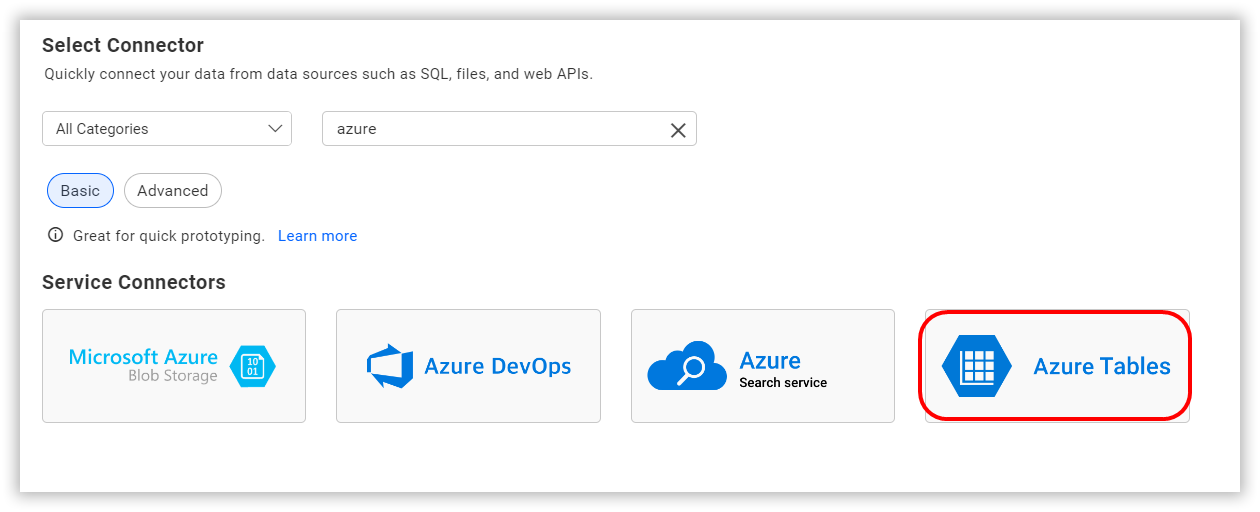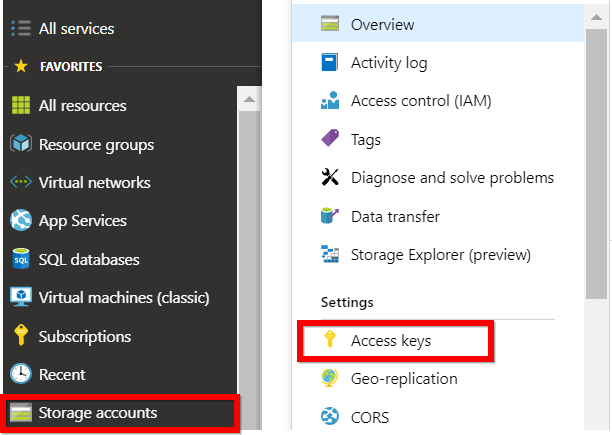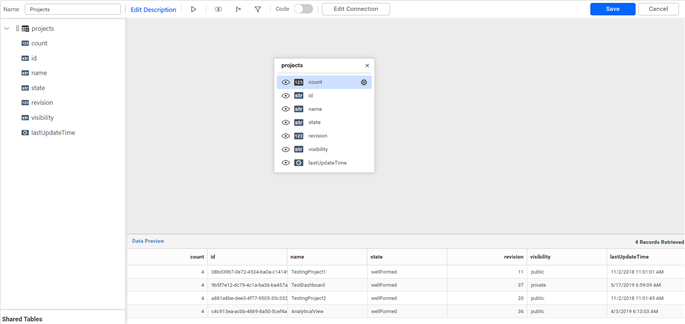Azure Tables data source
The Bold BI dashboard designer supports connecting to Azure Tables web services using the REST API.
Choose Azure Tables data source
To configure the Azure Tables data source, follow these steps:
-
Click the Data Sources button in the configuration panel to add a new data connection.

-
Click CREATE NEW to launch a new connection from the connection panel.
-
Select the Azure Tables connection in the connection panel.

NOTE: You can also create a data source from the home page by clicking the Data Sources menu from the left menu panel and selecting Create Data Source from the data sources page.

Create Azure Tables data source
Once you click the data source, the NEW DATA SOURCE configuration panel opens. Follow these steps to create an Azure Tables data source.
-
Enter a name and description (optional) for the data source.
-
Enter a valid Storage Account Name and Storage Account Access Key. For more information about Access Keys, refer to the Azure Tables API documentation.
-
Select a table from the Tables dropdown.
-
In Max Rows, enter the maximum number of rows to be fetched from the Azure Tables data source. This value is used for pagination.
-
Choose a time interval for Refresh Settings using the combo box to trigger the REST API request periodically to keep the data in sync with the dashboard.

You can edit the connection information using the Edit Connection option.
Additional information
| Refresh Settings | The period of time before the next refresh call is triggered. This will automatically trigger a call to the API configured in the data source to keep the data up to date. If you do not want to sync your new data, choose ‘Never’. |
How do I get the Storage Account Name and Storage Account Access Key for connecting Azure Tables data source
- In the Azure Portal, click on Storage accounts and select the storage account.
- Go to Settings -> Access keys to get the access keys.

Preview and data import
-
Click Preview & Connect to connect with the configurations that have been set.
-
The Choose Schema(s) dialog opens. The schema represents the key fields of JSON data retrieved from the Azure Tables Rest API request. This dialog displays a list of schemas in the treeview and its corresponding values in the grid for preview. Select required schema(s) from treeview to use it in designer and click Connect.

-
The data design view page with the selected table schema opens. Drag and drop the table.

-
Click Save to save the data source with a relevant name.